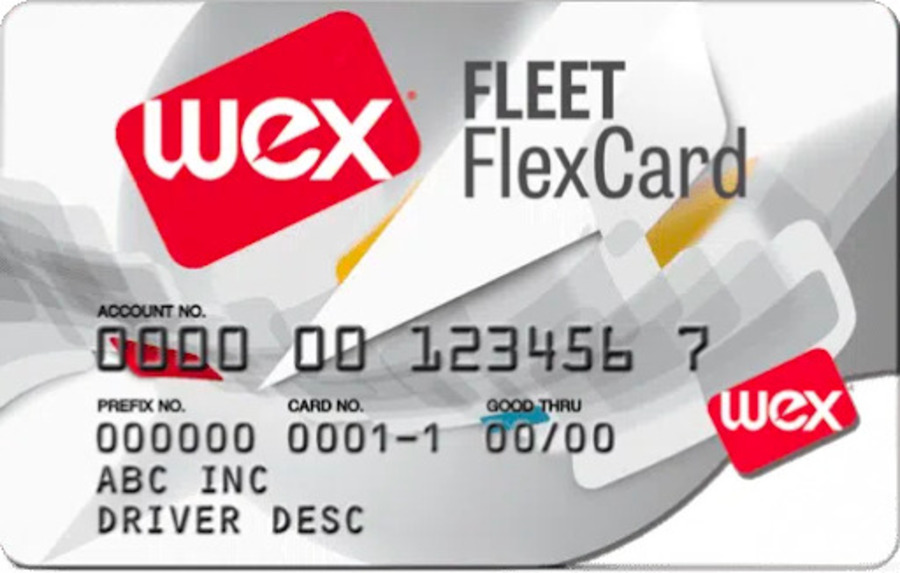Are you looking to cut down on fuel costs for your fleet of trucks? This guide is for you, fleet managers! We've put together practical tips that could help you save as much as $5,000 a year on fuel.
By the end of this article, you'll have learned easy-to-apply strategies like choosing the right states to buy cheaper diesel, using smart technology to plan better routes, and keeping your trucks in top shape.
Dive in to discover how you can make your fleet more fuel-efficient and save some serious cash!
1. Fill Your Tank in the Cheapest States for Diesel
Fleet managers, it's crucial to educate your drivers on the strategic choice of where to refuel their diesel tanks. Why? Because diesel fuel prices vary significantly across states. Making informed decisions on where to fill up can lead to substantial savings in your overall fuel costs.
The American Automobile Association (AAA) provides an invaluable resource in this regard. By regularly checking AAA's state-by-state average gas prices, drivers can plan their refueling stops in states where diesel prices are lower. This approach requires a bit of planning, but it's a straightforward and effective strategy to cut down on fuel expenses.
By choosing the most economical states for diesel, you're not just saving pennies per gallon – over time, these savings accumulate, contributing significantly towards reducing your annual fuel expenditure by $5,000.
States With the Highest Diesel Fuel Prices
As of the latest data, the states with the highest average diesel fuel prices are:
- California ($5.334)
- Hawaii ($5.603)
- Washington ($4.803)
- Pennsylvania ($4.470)
- New York ($4.413)
California leads with significantly higher diesel prices, which can be attributed to factors such as strict environmental regulations, high state fuel taxes, and the state's specific fuel formulation requirements. Hawaii's high prices are likely influenced by the additional costs associated with transporting fuel to the islands.
States With the Lowest Diesel Fuel Prices
On the other end of the spectrum, states with the lowest diesel fuel prices include Oklahoma ($3.412), Arkansas ($3.589), Missouri ($3.507), Mississippi ($3.548), and Texas ($3.509). These states are known for their lower fuel taxes and closer proximity to major oil refineries and distribution centers, which helps keep fuel costs down.
Regional Variations
A clear regional pattern emerges from the data. Generally, states in the Midwest and the South tend to have lower diesel prices, while states on the West Coast and Northeast have higher prices. This pattern reflects regional differences in tax rates, supply chain logistics, and access to oil refineries.
Strategic Refueling
For fleet managers, strategically planning fuel stops in states with lower diesel prices can result in significant savings. Especially for long-haul routes, planning the journey to include refueling in states like Oklahoma or Texas instead of California or Hawaii can help in reducing overall fuel costs. By taking these factors into account, fleet managers can more effectively plan routes and manage fuel costs, contributing to the goal of saving $5,000 per year in fuel expenses.
Trucking know-how 101
If you're new to trucking, start here to get your new trucking business set up. Everything from weight classes to tax deductions, we've got you covered.

WHAT YOU'LL LEARN...
- Commercial Truck Insurance Rates by State
- Trucking Authority: Ultimate Guide
- CDLs and Weight Class Guide for Truckers
- 5 Common ELD Mistakes Fleets Make
- How to Optimize Route Planning for Local/Regional Trucking Companies
- Four Strategies to Reduce Your Fleet's Fuel Costs by $5K per Year
- Trucking Software for Small Fleets: Ultimate Guide
2. Leverage Telematics to Bring Down Your Fleet’s Fuel Costs
Telematics is a technology that combines telecommunications and informatics to monitor various aspects of a vehicle's operation. It's like having a smart assistant in your vehicle that observes and reports on how the vehicle is being used. Fleet managers can use telematics to significantly reduce their fleet's fuel costs. Here's how:
Route Optimization
Telematics systems use advanced GPS technology to track vehicles' locations and suggest the most efficient routes. These systems analyze multiple variables, including intersections, historical traffic patterns, and fuel consumption rates, to find the best possible routes under current conditions.
Telematics providers like Verizon Connect use cloud-based computing to evaluate millions of route options in real time, incorporating fuel consumption rates in their calculations.
Fleet managers, like you, receive this data, helping you to supervise your drivers' route choices, ensuring they align with fuel-efficient routes suggested by the software.
Monitoring Driving Behaviors
Telematics systems automatically record instances of “aggressive driving”, such as:
- Speeding
- Harsh braking
- Rapid acceleration
Fleet managers can use this data to coach their drivers on safer and more fuel-efficient driving practices, leading to direct fuel savings.
Vehicle Maintenance Alerts
Telematics systems provide real-time alerts on various vehicle maintenance issues that can affect fuel efficiency, such as:
- Tire pressure
- Engine oil levels
- The condition of intake and exhaust systems
For example, low engine oil levels can increase friction and strain the engine, leading to reduced fuel mileage. Telematics can predict potential maintenance issues like this before they escalate.
This allows fleet managers to schedule repairs proactively, leading to reduced fuel consumption incurred by your fleet by as much as 5% to 10%. For instance, ensuring optimal tire pressure can prevent a 1% reduction in fuel economy for every 10 psi of under-inflation.
In summary, telematics systems offer comprehensive monitoring and real-time alerts for vehicle maintenance, directly impacting fuel efficiency. By leveraging these alerts, fleet managers can ensure their vehicles are in top condition, leading to significant fuel savings and reduced operational costs.
![[INFOGRAPHIC] Fleet Telematics](http://images.ctfassets.net/8edxnwlq2x0m/11UgQFaln6pP1jUUUJpLEG/082b9e0ffed463226b867afb435428b8/Infographic_Fleet_Telematics.jpg)
3. Optimizing Your Fleet’s Weight
Managing the weight of each truck in your fleet is a key strategy for reducing fuel costs. Understanding the relationship between vehicle weight, fuel consumption, and associated costs can lead to significant savings. Here's how optimizing fleet weight impacts fuel costs:
The Principles: Heavier vehicles consume more fuel. Increased weight demands more energy for movement. Reducing a vehicle's weight directly decreases fuel consumption.
Study Insights: A study from MIT highlighted that for light trucks, every 100-kg reduction in weight can decrease fuel consumption by approximately 0.5 L/100 km. Here are the fuel cost savings estimated by the MIT study:
These savings are calculated based on a fuel price of $1.30/L and the average fuel consumption-weight relationship reported by MIT.
Strategies for Fleet Managers: Opt for smaller, more fuel-efficient engines. When purchasing new vehicles, choose the lightest option that meets your needs. Today's pickup trucks are no longer the gas guzzlers of the past. Modern advancements in technology have introduced options like compact turbocharged engines, efficient high-torque diesel, and innovative gas/electric hybrid systems. Here are some of the most fuel-efficient engines for commercial trucks:
| Model Name | Engine Type | Fuel-Efficient Features | Fuel Efficiency Compared to Average (%) |
|---|---|---|---|
| Mack Anthem | Mack MP8HE | HE+ package with Energy Recovery Technology and evolved wave piston design, earns up to 11 miles per gallon. | 9.5% improvement |
| Peterbilt Model 579 | PACCAR MX-13 | Advanced aerodynamic design, PACCAR powertrain, Fuller Advantage automated transmission, Predictive Cruise Control. | 8% more efficient |
| Volvo VNL Series | Volvo D13TC | Turbo Compounding technology, improved aerodynamics. | 7.5% more efficient |
| Freightliner Cascadia | Detroit DD15 Gen 5 | Advanced aerodynamics, integrated powertrain technology, ultra-high compression ratios paired with a new swirl piston design. | 3% more efficient |
![[INFOGRAPHIC] Fuel efficient truck engines](http://images.ctfassets.net/8edxnwlq2x0m/5OsHDSQRHEWvS6unEdNNss/1708561719bd2ae4752a70a6909ee793/-INFOGRAPHIC-_fuel_efficient_truck_engines.jpg)
4. Invest in Fuel Cards
As a fleet manager, reducing fuel costs is a critical aspect of optimizing your operations. One effective way to achieve this is by utilizing fleet fuel cards. Here, we explore how leveraging a WEX fleet fuel card can help you save up to $5,000 a year:
- Nationwide Acceptance: WEX fuel cards are accepted at 95% of U.S. gas stations and over 45,000 service locations. This wide acceptance ensures your drivers can easily refuel anywhere in the country, avoiding out-of-route miles in search of specific fuel stations.
- Simplified Maintenance and Fuel Purchases: With a WEX fuel card, you can pay for both fuel and vehicle maintenance. Accepted at more than 45,000 service locations across the U.S., these cards streamline the process of paying for vehicle maintenance, parts, and services.
- Detailed Transaction Tracking: The WEX fuel card consolidates the cost of fuel and maintenance services in one place, making it easier to track and manage your fleet's fuel expenses. This detailed tracking aids in identifying areas for cost reduction.
- Service and Maintenance Locations: The card is accepted at various service locations, including American Lubefast, AAMCO, Big O Tires, Firestone, Jiffy Lube, Meineke, and many more. This extensive network ensures your fleet's maintenance needs are easily and affordably met.

FREE Resources for Truckers
Takeaways
- Educate Drivers on Fuel Prices by State: Instruct drivers to use resources like AAA's state-by-state average gas prices to refuel in states with lower diesel costs.
- Avoid High-Cost States: Plan routes to bypass states like California and Hawaii, where diesel prices are significantly higher.
- Target Economical States for Refueling: Prioritize stops in states such as Oklahoma, Arkansas, and Texas, known for their lower diesel prices.
- Route Planning around Fuel Costs: Utilize long-haul routes that include refueling in states with cheaper diesel prices for substantial savings.
- Implement Telematics for Route Optimization: Use telematics systems to find the most fuel-efficient routes and reduce unnecessary fuel consumption.
- Monitor and Improve Driving Behaviors: Analyze telematics data to coach drivers on fuel-efficient practices like avoiding harsh braking and rapid acceleration.
- Proactive Vehicle Maintenance: Utilize telematics alerts for timely maintenance, such as checking tire pressure and engine oil levels, to enhance fuel efficiency.
- Reduce Vehicle Weight: Lighten each truck’s load when possible, as reduced weight directly decreases fuel consumption.
- Invest in Fuel-Efficient Vehicles: When acquiring new vehicles, choose models with advanced fuel-efficient engines like the Mack Anthem or Volvo VNL Series.
- Optimize with Fleet Fuel Cards: Adopt WEX fleet fuel cards for widespread acceptance, streamlined maintenance, detailed tracking, and cost management.
